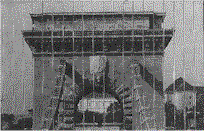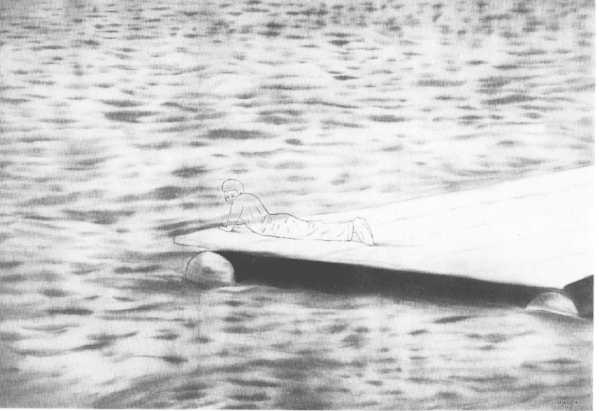|

MILLECENTENÁRIUM
1996. augusztus 20-tól
szeptember 8-ig

See English below
5 kerületi művész a Bartók 32
Galériában
Bak Imre, Fehér László, Klimó Károly,
Lakner Antal, Veress Zsolt

Lakner Antal: Honfoglalás / Conquest

Fehér László: Stégen/ On the landing
stage. Olaj, vászon, 180x240 cm
MILLECENTENNIAL
ANNIVERSARY
What s this exhibition about? What s the motive? The
co-ordinates: firstly, the occasion and the date. The year is 1996 (the millecentennial
anniversary of the Magyar conquest of the Carpathian Basin), and the day 20 August
(Hungary s Constitution Day, plus Saint Stephen s Day). Secondly, the artists living in
the neighbourhood (11th district Budapest), of varying age, yet the very best of their
generations. And thirdly, the works, exhibited for the first time, or made expressly for
the occasion (two artists).
Any art historian or critic will immediately begin by
looking out for identical, or binding traits: what do these works share in common, what
brings them together? Beyond appearances (salient black and white monochrome, and Imre
Bak s reserved colorant) time, what s more, local time play the lead.
Ripped to pieces, spread out and covered with dark
patches, a sequence of pages from Hungary s past is interspersed with important dates from
Hungarian history—all in Károly Klimó s Pages from a History Book.
Imre Bak s painting Köveskál refers to a
characteristic Hungarian landscape loaded with history; and in it flawlessly constructed
surfaces are separated by the architectonic proportions of old buildings.
László Fehér takes a look back on his private
history of the past decades. His Lying Figure on Jetty evokes the faded one-time
world of old photographs.
The two youngest artists have come along with
photos—not paintings—to portray changing/unchanged time. A topographical survey of the
clockless steeples of Hungarian village churches, Timeless times by Zsolt Veress
refers to the (unfinished) things that remain unchanged in the course of fleeting time;
time has stopped still. Antal Lakner s Conquest presents the most tangibly
the historical past-present relation. Functionally insignificant, the many replacements of
the Hungarian coat of arms (as a basic source of reference to the outside world) on Chain
Bridge (a metaphor of continuity and permanence) are portrayed by a characteristic modern
rotating, triple-phase advertisement board: the past five decades of Hungarian history are
monotonously repeated by the recurring starting points.
And looking back, setting the imagination free, one has
many options to choose from. Not far from here, in the Hungarian National Gallery, an
exhibition opened recently on the centenary of the founding of the renowned Nagybánya
group. It is worth taking a brief look at the difference between “those” works and
“these” works: what s changed since?. Even skipping from decade to decade will reveal
some interesting dates. For instance, the second generation of the Nagybánya group
(founded in 1896), while 1956 was more of a historical pause. Our quick overview includes
three of the artists at this exhibition (with regard to dates of birth). Károly Klimó
was born in 1936, and the two young artists in 1966, the year of the famous juryless
Studio exhibition. We might mention the art and artists of the district (József
Rippl-Rónai, for instance, used to live in the studio-villa on Kelenhegyi út). Such
thoughts might lead us afar, however, they demonstrate well indeed how much the five works
of the five artists at this pars pro toto style exhibition can tell about Hungary
celebrating its millecentennial anniversary in 1996.
András Zwickl
(Read at the exhibition opening)
Klimó Károly: Lapok egy
történelemkönyvből /Pages from a history book (Kollázs, lapok egyenként
168x204 mm)
Veress Zsolt Időtlen idők I-VI. Timeless
time I-VI. / egyenként 50x60 cm (Fotók, homokfúvott üveg)
Lakner Antal: Honfoglalás/Conquest.
képváltós prizmatábla, 70x100 cm (megsemmisült)
Bak Imre: Köveskál. Akril,
vászon, 200x450 cm
fotók: Sulyok Miklós
 
|